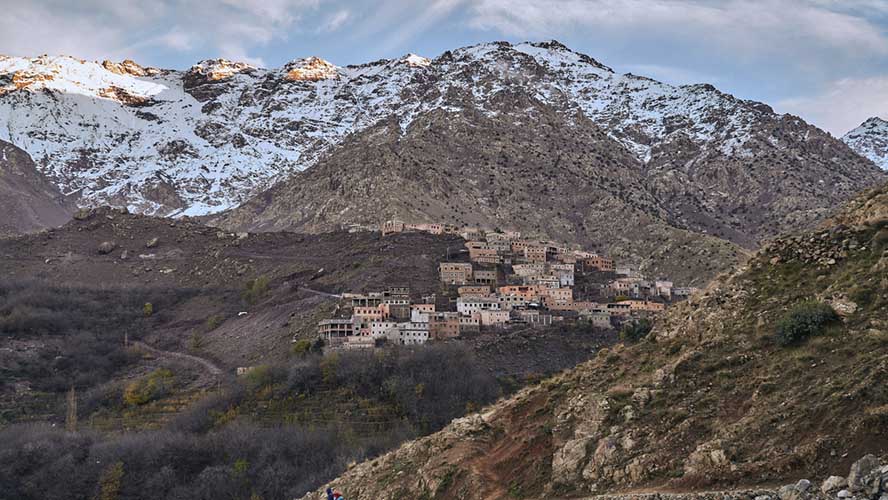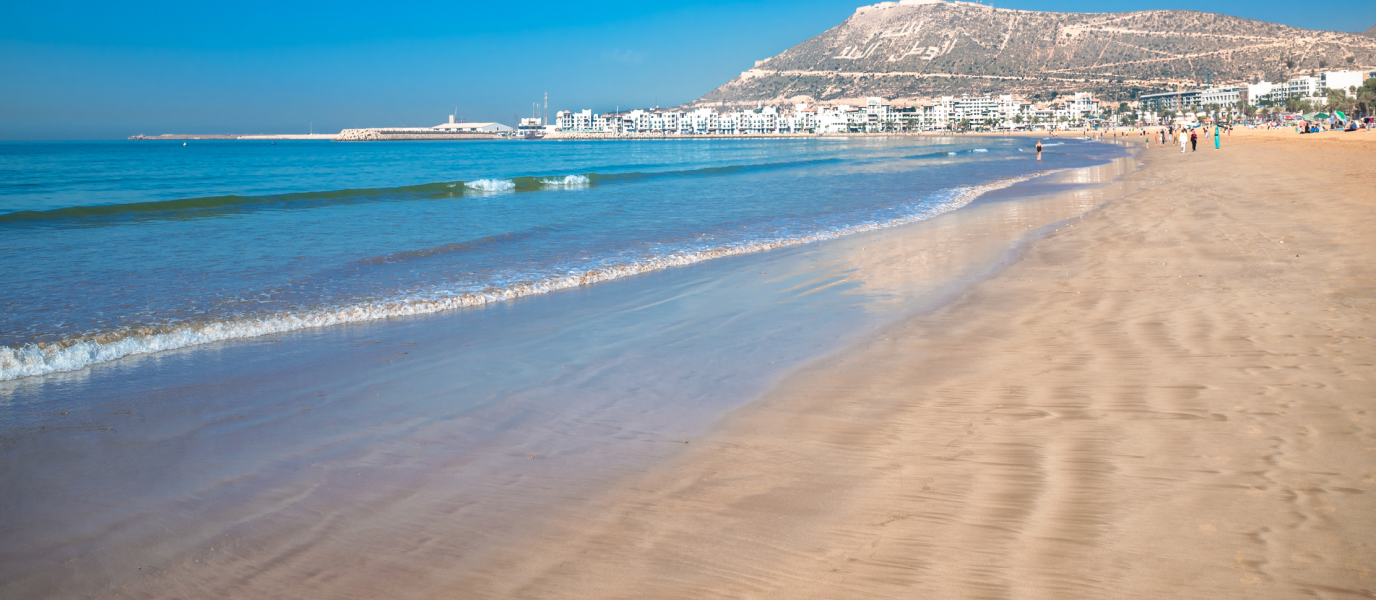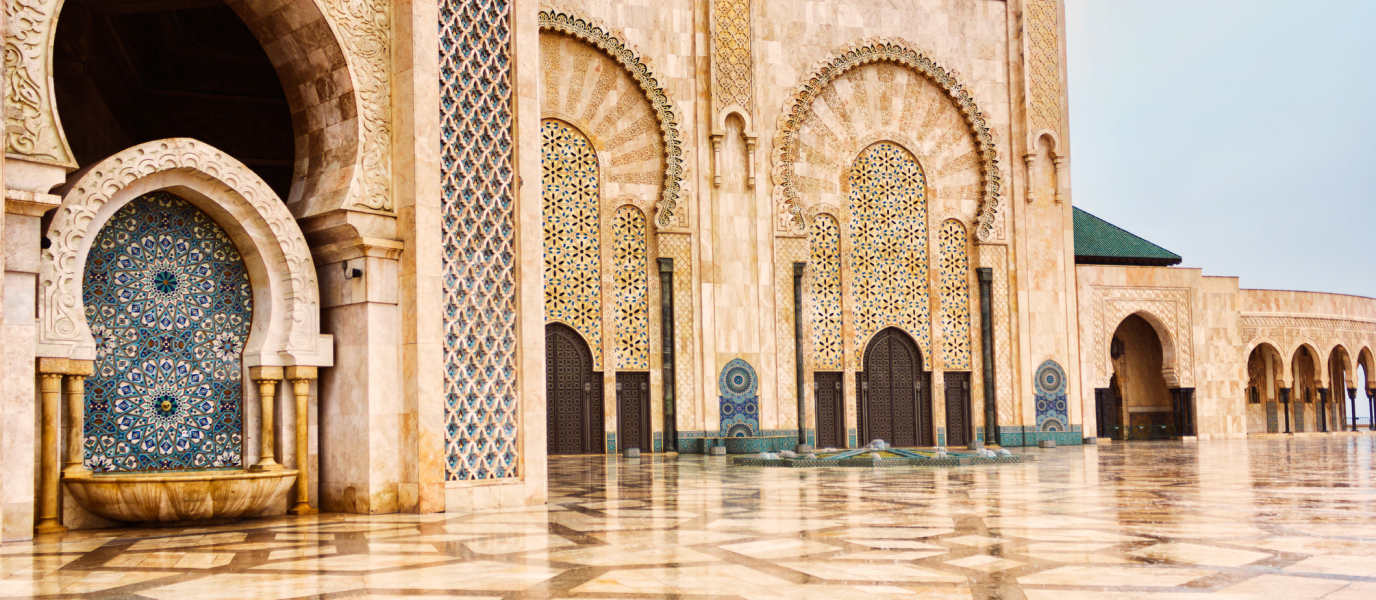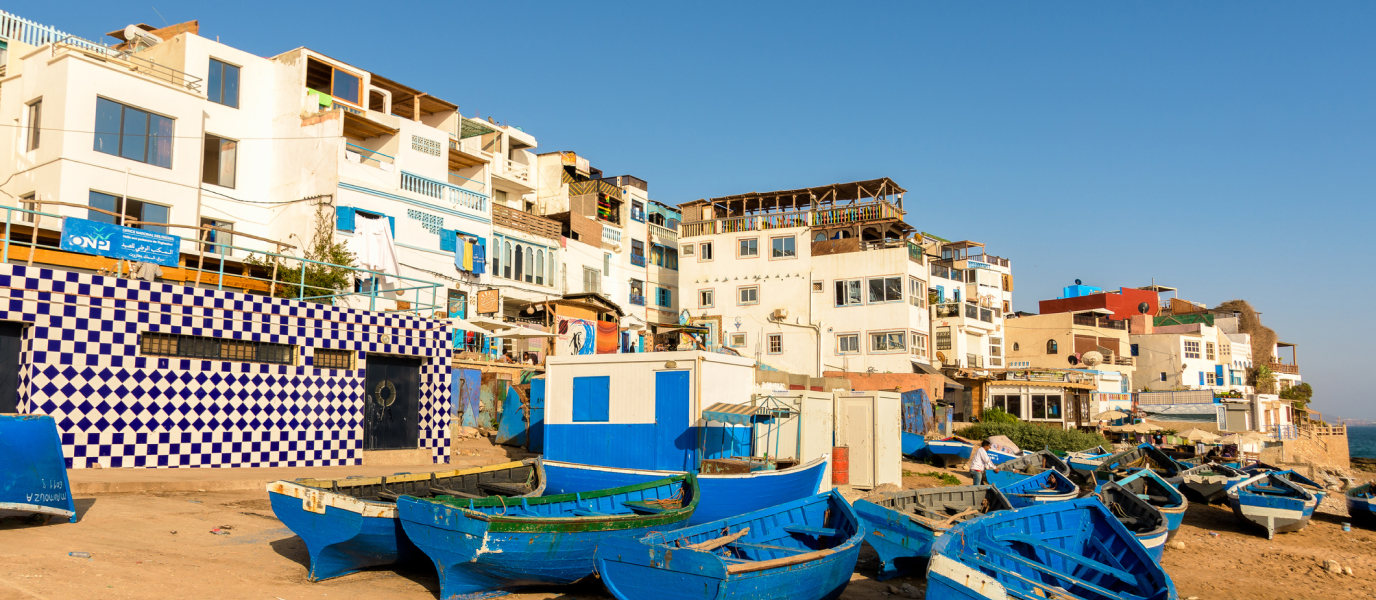There is so much to see near Marrakesh that a trip of just a few days will be too short to take in the region’s many attractions. The city sits at a geographical crossroads (hence its historical importance) between the sea, the desert and the magnificent Atlas mountains, all of which are as interesting as they are attractive.
But just as important as choosing what to see near Marrakesh is deciding when to do so, as it is not advisable to do certain excursions at certain times of the year. For example, going to the desert at the height of summer or the highest mountains during the harshest days of winter is not advised.
Below are some of the best excursions that can be done from Marrakesh, by road, in just a few hours.
The great desert experience
Without a doubt, the Sahara is a must-visit place near Marrakesh. Spending a night in the largest hot desert in the world, spanning over nine million square kilometres, is an unforgettable experience. With no light pollution, millions of constellations can be seen with the naked eye.
And then, waking up in the middle of the night to get up and watch the sun rise over the desert dunes is almost sublime.
One classic excursion is the one that goes from Merzouga to Zagora, passing through the small village of Ramlia, allowing you to discover the area’s diverse desert landscapes consisting of vast arid plains, dunes, dry valleys, gorges, oases and more.
The route can be done in a 4×4 vehicle in around four hours, although most visitors leave Merzouga in the morning and arrive in Zagora in the late afternoon, or vice versa, to make the most of the desert experience.
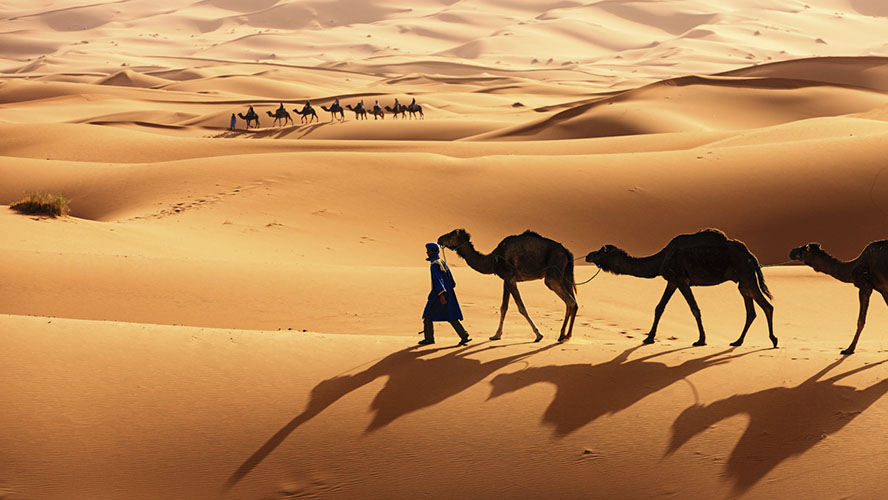
Camellos en el desierto de Merzouga
Essaouira: the port city of artists and artisans
Essaouira is one of the great revelations to see near Marrakesh, a town with a Portuguese-style appearance overlooking, or rather perched, above the vast Atlantic Ocean.
Traces of its Portuguese past are visible at every step you take, even when seen from afar: whitewashed houses decorated with geometric tiles, streets with typical Portuguese paving, wooden doors and windows painted in bright colours, a rampart built with golden stones and more, all with the presence of numerous artists and artisans, who in this town have found inspiration for their creations.
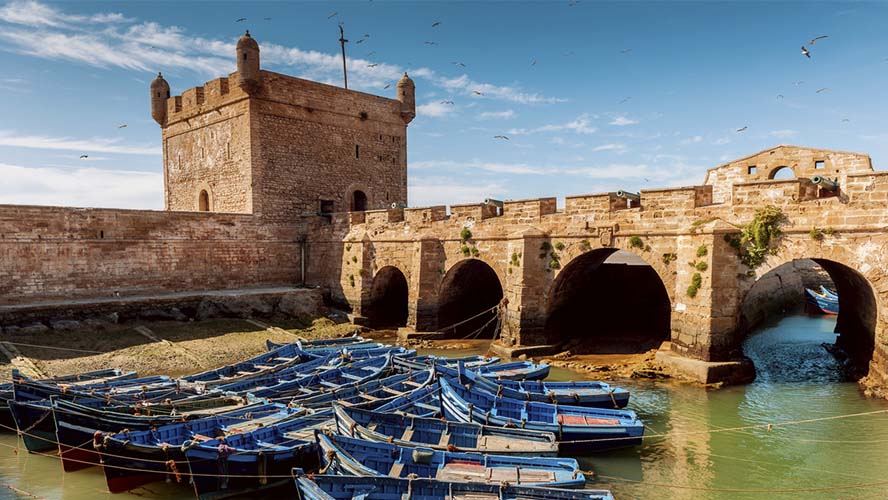
Essaouira was known as Mogador during the period in which this part of Morocco was under Portuguese rule (fifteenth to eighteenth centuries) and was one of the most important ports in the country. This wealth explains the beauty of its medina, a UNESCO World Heritage Site since 2001.
Just as attractive as the town itself are the area’s beaches, where you can enjoy (weather permitting) the pleasure of swimming in the ocean or doing water sports.
The urban beach itself and Diabat-Thagarte beach, for example, boasts six kilometres of golden sand together with the remains of Dar Sultan castle, dating from the eighteenth century.
Ouarzazate: the Hollywood of Morocco
Ouarzazate (or Uarzazat) is one of the most scenic places near Marrakesh. It is not surprising that many directors have chosen the city and its province as the setting of internationally famous films and television series, such as Lawrence of Arabia, The Jewel of the Nile, Gladiator, The Mummy, Star Wars and Game of Thrones, among others.
Most of these productions took advantage of the technical support of Atlas Studios, regarded as the Hollywood of Morocco. Many scenes also used the red earthen ramparts of the city – considered the Gateway to the Desert – as a backdrop.
In fact, it is also the starting point of many of the excursions that go deep into the Sahara to spend the night in tents, as well as some of the routes that cross the valleys, reaching the great heights of the neighbouring Atlas mountains.
In terms of the city of Ouarzazate, every trip should include a walk through its maze-like medina, in addition to admiring the Kasbah Taourirt, a fortress with numerous rooms and passageways ornately decorated with plasterwork and tiles. It is undoubtedly one of the most authentic constructions of its kind to see near Marrakesh.
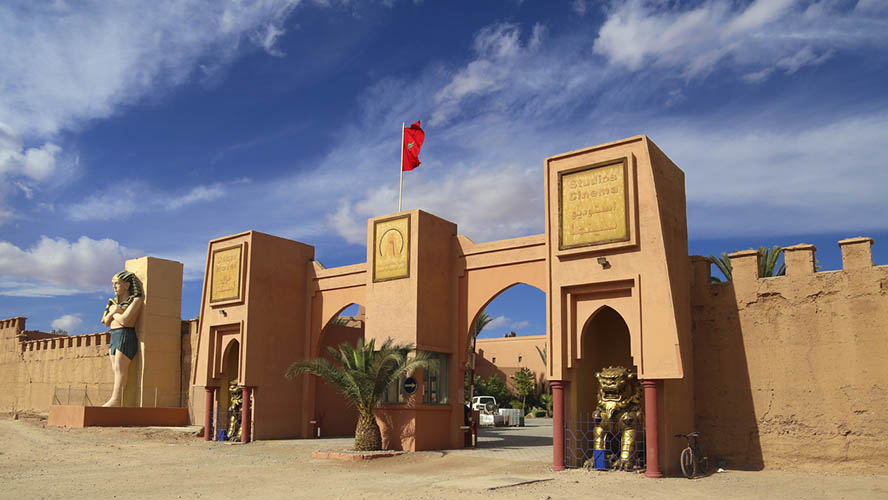
Ait Ben Haddou: a fortified village in the middle of the desert
Around 30 kilometres from Ouarzazate is the ksar of Ait Ben Haddou, which is, without a doubt, one of the most interesting fortified villages near Marrakesh. Built from mud and stone, it is so authentic that it has been declared a Unesco World Heritage Site.
In fact, it is regarded as one of the best-preserved ksars in Morocco, accessed and exited through two well-controlled gates, through which traffic was managed.
Perched on a hill, overlooking a surrounding area spanning many kilometres, the interior of Ait Ben Haddou still contains historical constructions such as the old crenellated castle and the mosque, as well as numerous fortified towers. Meanwhile, the labyrinth of narrow streets in the medina are lined with dozens of shops selling crafts and souvenirs.
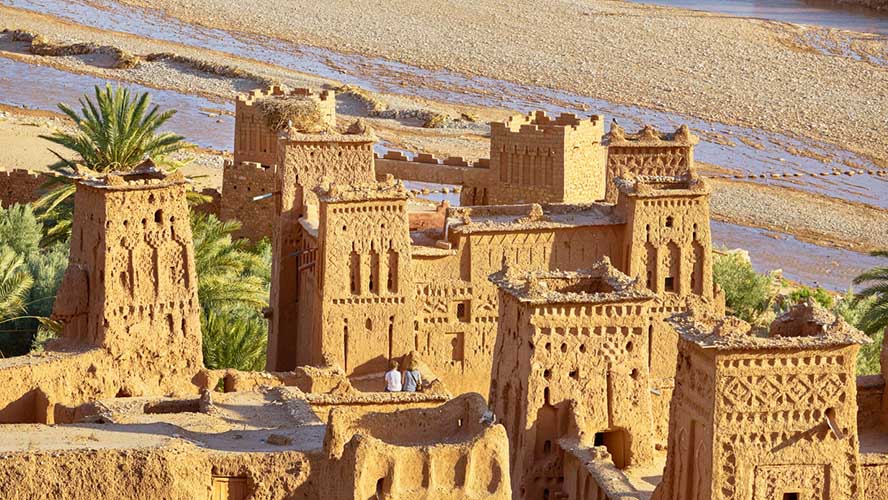
Ouzoud waterfalls and the fertile Ourika valley
Out of all the places worth seeing near Marrakesh, the Ouzoud waterfalls are without a doubt the most refreshing. That is, as long as the riverbed hasn’t dried up, something that occurs during the harshest, driest summers.
Situated next to the village of Tanaghmeilt, the Ouzoud waterfalls are not just a place to take a dip. They are also an excellent place to do mid-altitude mountain excursions and for many Moroccan families they are simply a great place to relax.
In fact, the proliferation of hotels and commercial businesses that have sprung up in the area is quite striking, such as restaurants with tables on the riverbed itself, so diners can enjoy their food with their feet in the water.
Before arriving in Ouzoud you must pass through the Ourika valley, a fertile agricultural area around which small villages have been built, where you can get familiar with rural Moroccan life. In these villages you can buy a range of handicrafts and even some highly-prized argan oil.
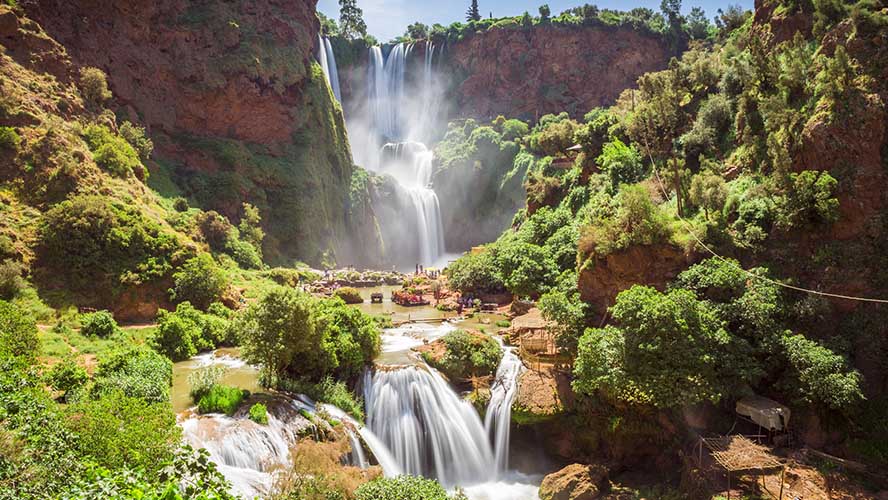
Atlas mountains
Together with the Sahara, the Atlas mountains are one of the most spectacular and diverse places to see near Marrakesh. Just over 100 kilometres from the city is Tubqal, the highest peak in Morocco and Northern Africa, reaching a height of 4,167 metres.
An excursion to the peak is reserved for mountaineering enthusiasts and fans of snow. In fact, routes to the mountain usually take several days and are not without a certain degree of difficulty.
There are many other options, however, if you want to admire the landscapes of the Atlas mountains with less effort. The most notable are the excursions through the so-called Three Valleys, those of the Ourika, Asni and Oukaimeden rivers, which pass through fertile farmland and small villages, inhabited since time immemorial by the Berber people and surrounded by scenic views of the peaks of the Atlas mountains.
